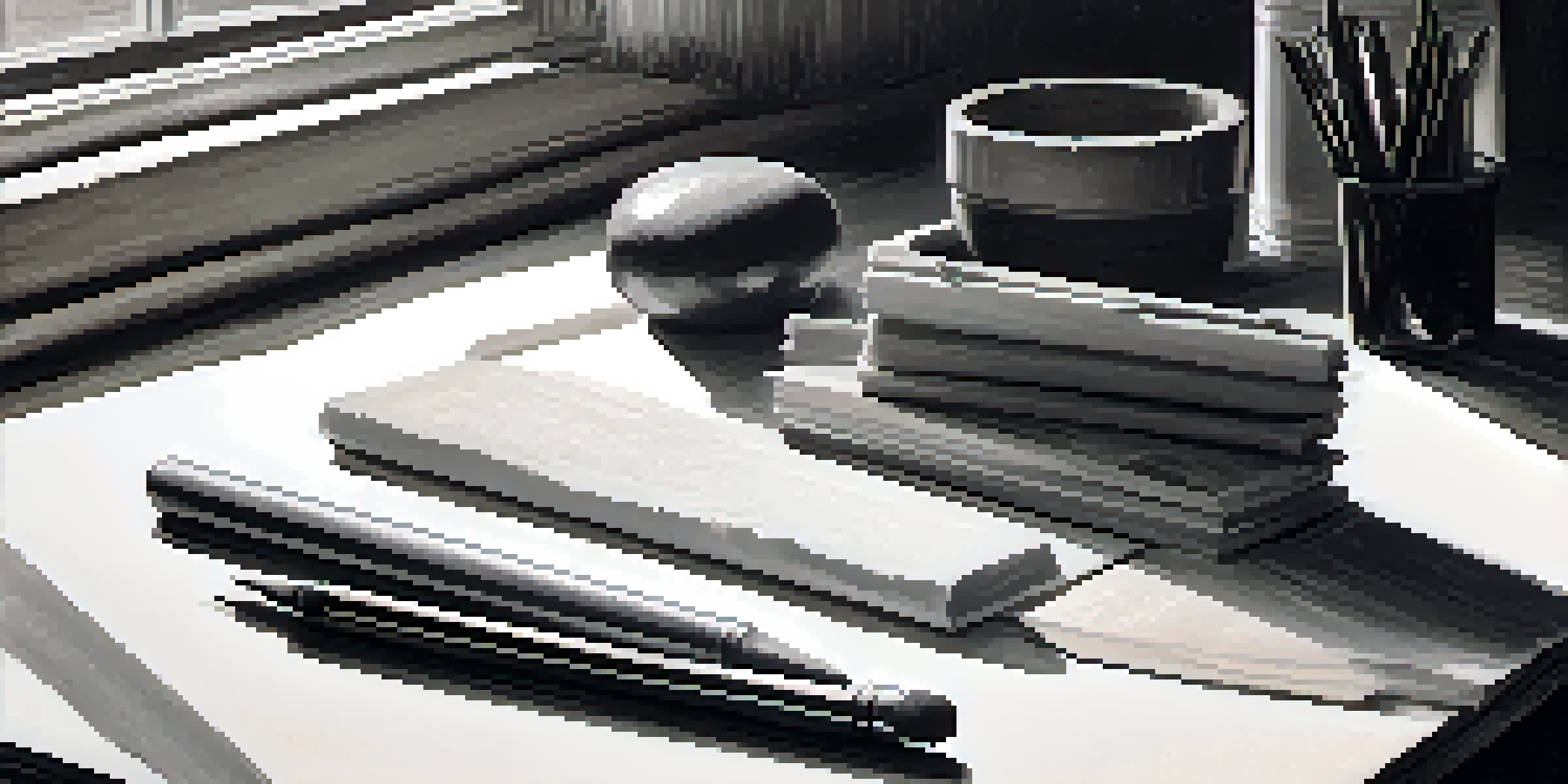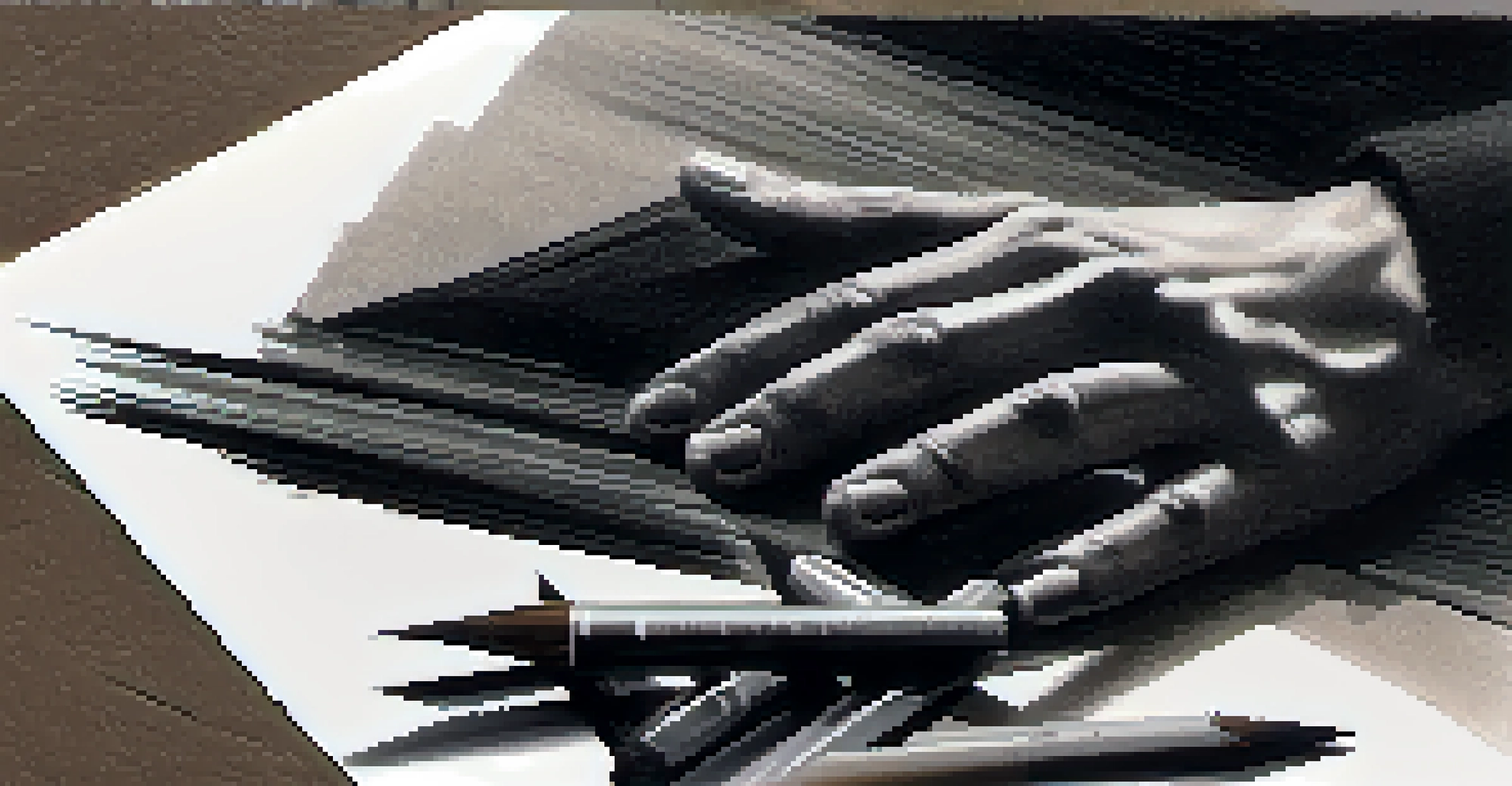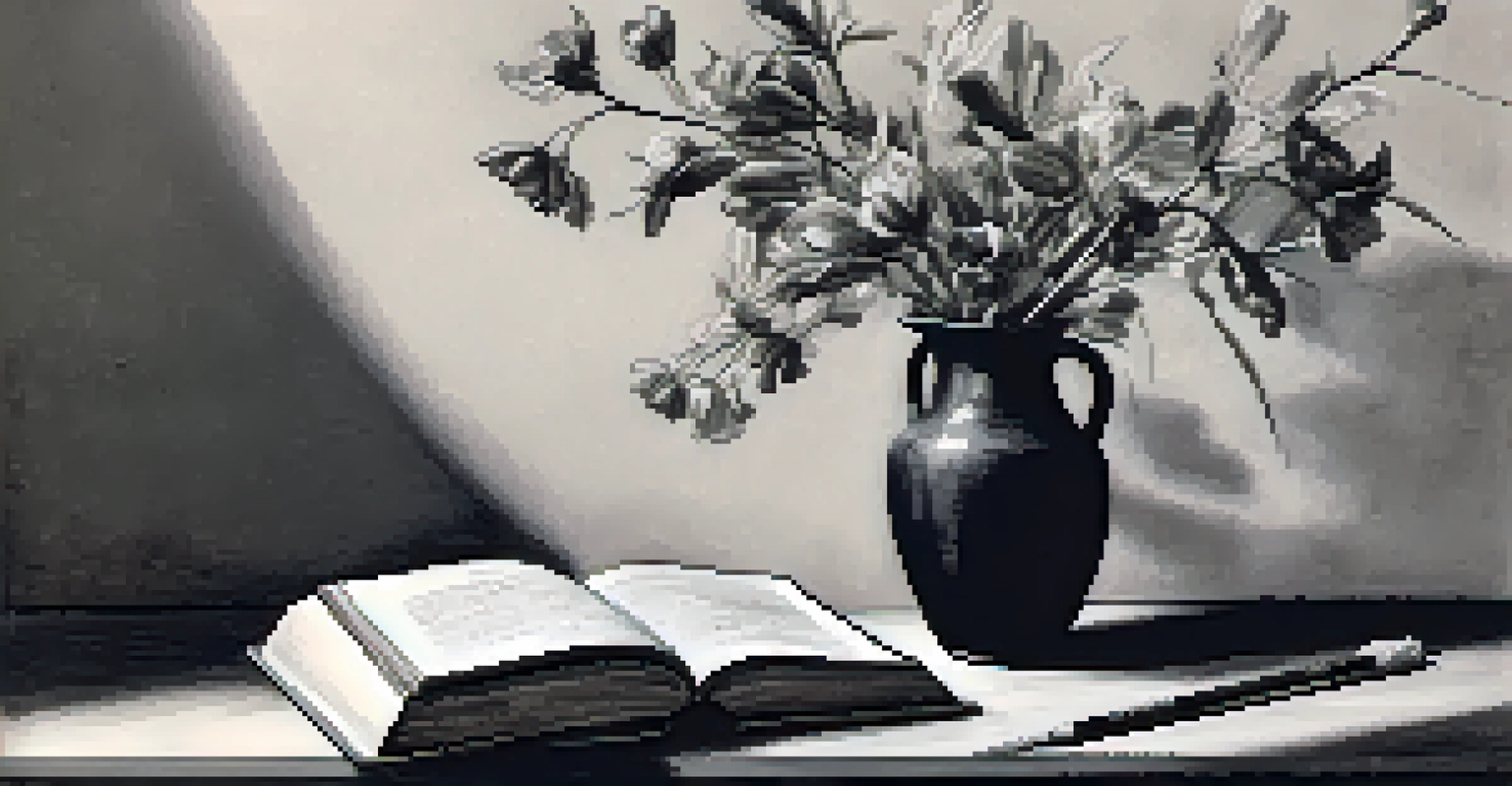The Basics of Charcoal Drawing: Techniques for Beginners

Introduction to Charcoal Drawing and Its Appeal
Charcoal drawing is a timeless art form that captivates artists and viewers alike. Its rich, deep blacks and soft grays create dramatic contrasts, making it a favorite medium for capturing light and shadow. Beginners are often drawn to charcoal due to its accessibility and the immediate results it can produce, allowing for a quick expression of ideas.
Every artist was first an amateur.
What makes charcoal unique is its versatility; it can be used for detailed sketches as well as bold, expressive works. This medium encourages experimentation, giving artists the freedom to explore different techniques. Whether you're creating fine lines or broad strokes, charcoal adapts to your style, making it perfect for novices.
Related Resource
In this article, we will walk through fundamental techniques and tips to help you embark on your charcoal drawing journey. From understanding the materials to mastering shading, you'll gain confidence as you unleash your creativity.
Essential Materials for Charcoal Drawing
Before diving into drawing, it’s crucial to gather the right materials. You’ll need charcoal sticks, which come in various hardness levels, ranging from soft to hard. Soft charcoal produces rich, dark lines ideal for shading, while hard charcoal is great for fine details and outlines.

In addition to charcoal, investing in quality paper designed for charcoal drawing can make a significant difference. Look for textured paper that can hold the charcoal without smudging too easily. A blending stump or tortillon can also enhance your ability to create smooth transitions and soft edges in your work.
Charcoal's Versatility for Artists
Charcoal drawing offers a unique blend of accessibility and adaptability, making it ideal for both beginners and experienced artists to explore their creativity.
Don’t forget about erasers! A kneaded eraser is perfect for lifting charcoal and creating highlights, while a regular eraser can help clean up edges. Having these materials on hand will set you up for success and allow you to focus on honing your techniques.
Basic Techniques: Lines and Strokes
Understanding how to create different lines and strokes is foundational to charcoal drawing. Start by practicing various line types—straight, curved, and broken. Experiment with pressure; pressing harder produces darker lines, while lighter pressure yields softer effects.
Art is not freedom from discipline, but disciplined freedom.
Try using the side of the charcoal stick for broader strokes, which can create a more textured look. Conversely, the tip can be used for precise details. This versatility allows you to develop a personal style and understand how to manipulate the medium to your advantage.
Related Resource
As you practice these techniques, don’t hesitate to incorporate different angles and motions. The more you explore, the more comfortable you’ll become with the charcoal, ultimately enhancing your artistic expression.
Shading Techniques to Create Depth
Shading is vital for adding depth and dimension to your drawings. One effective method is hatching, where you create parallel lines to build up shadow. Varying the spacing between lines can help achieve different levels of darkness, making your work more dynamic.
Cross-hatching is another technique where you layer lines in different directions, further enhancing the richness of the shadow. This method allows for greater control over the tonal values in your drawing, making it a favorite among artists.
Key Techniques for Depth and Texture
Mastering techniques like shading, blending, and creating highlights is essential for adding depth and texture to charcoal drawings.
Additionally, blending can create smoother transitions between light and dark areas. Use a blending stump or your fingers to gently smudge the charcoal, but be careful not to overdo it, as too much blending can muddy your work.
Creating Highlights and Textures
While charcoal is excellent for dark tones, creating highlights is equally important. You can lift charcoal off the paper using a kneaded eraser to create light areas, effectively enhancing the contrast in your drawing. Just gently dab the eraser on the charcoal to reveal the paper underneath.
Textures can also be created by varying your application techniques. For example, using a stippling technique, where you place small dots of charcoal on the paper, can give surfaces like skin or fabric a unique texture. Experimenting with these methods will add interest to your work.
Related Resource
Remember, the key to effective highlights and textures is balance. Too many highlights can detract from the overall impact, so take your time and assess your drawing as you go.
Composition: Arranging Elements in Your Drawing
Good composition is essential for any artwork, including charcoal drawings. Start by sketching a light outline of your subject to determine the placement of elements on the page. Use the rule of thirds, a technique where you divide your canvas into nine equal parts, to create a more balanced and engaging composition.
Don’t be afraid to experiment with different angles and perspectives. A unique viewpoint can make your drawing stand out and offer a fresh interpretation of the subject. Consider what elements are essential to convey your message and how they can work together harmoniously.
Importance of Composition in Art
A well-thought-out composition enhances the visual impact of a charcoal drawing, guiding the viewer's eye and creating a balanced piece.
As you refine your composition, step back and view your drawing from a distance. This perspective can help you assess the overall balance and make necessary adjustments before moving forward with the details.
Final Touches: Finishing Your Charcoal Drawing
As you approach the finishing stages of your charcoal drawing, it’s time to add those final touches. Review your work for any areas that may need more contrast or detail. Adding darker lines or deeper shadows can significantly enhance the overall impact of your piece.
Once you’re satisfied with your drawing, consider using a fixative spray to preserve your work. This step helps prevent smudging and fading, ensuring that your artwork remains vibrant over time. Make sure to follow the instructions carefully for the best results.

Finally, don’t forget to sign your masterpiece! Signing your work not only gives you ownership but also celebrates your journey as an artist. Take pride in your progress and remember that every drawing is a step toward mastering your craft.